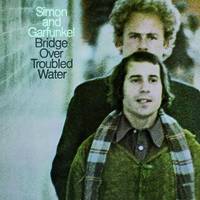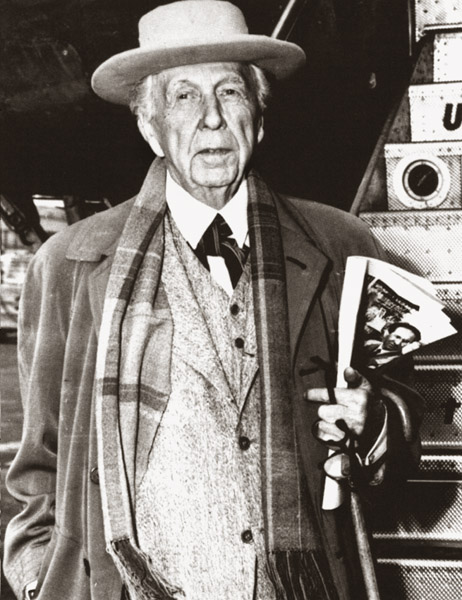|
n 1969, Paul Simon, his wife Peggy, Art Garfunkel and some other people rented a house for the summer on Bluejay Way
in the Hollywood hills. The same house, a few years earlier, had inspired George Harrison to write the Beatle song, "Blue
Jay Way." This time around though, it served as a backdrop for the creation of Simon and Garfunkel's greatest hit: the biggest
pop record of 1970.
Art was in Mexico for much of the summer, making his acting debut in a Mike Nichols film, Catch 22 (1969).
When he returned, Paul presented him with a tune written in his absence -- "Bridge Over Trouble Water." Surprisingly, Art
said he didn't want to sing the song, and suggested that Paul do it instead. Paul wouldn't hear of that, and later regretted
"giving the song away." In concert, Art wound up singing the song solo, with Paul sitting, brooding, off to one side. It was
that kind of resentment -- ironically, over a song of unity -- that lead to their break-up a short time later.
By that point, Simon and Garfunkel had been popular for more than four years, and were tiring of the grind. From September
to October, they taped an acclaimed TV special, Songs of America, which CBS telecast November 30. In October,
they embarked on yet another concert tour, which kept them on the road and out of the studio until mid-December. When they
finally did begin recording, they were, in Paul's words, "totally exhausted." But somehow they came through with the best
album they ever made.
The title track, "Bridge Over Troubled Water," started out as a simple two-verse melody, written by Paul in the key of
G. As Art's key was E-flat, the chords had to be transposed, and were by Jimmy Haskell (who later picked up a Grammy as "co-arranger").
Another musician, soon to be a founding member of Bread, was hired to play piano: Larry Knechtel. "I want a gospel kind of
feel," Paul said, and over a four-day period, Larry honed the tune in exactly that manner. Eventually, his part of the song
became so elongated that, in the studio, Paul decided to tack on a third verse. Later, Paul would point out how you could
"clearly hear" the addition, because "it didn't sound at all like the first two verses."
The piano part done, Joe Osborne then played two bass lines, which were mixed in. Next, vibes were added to make the second
verse "ring a little bit." After that came the drums, recorded in an echo chamber with tape reverb to give an afterbeat effect
Paul hired an outsider to write the string arrangement, and mailed a copy of the rough mix on a demo tape. Apparently the
vocal work on that tape was a little garbled, because the sheet music came back entitled "Like a Pitcher of Water." Garfunkel's
name was also misspelled. Paul rejected that arrangement and demanded that it be completely rewritten.
All of the above was completed in Los Angeles. Simon and Garfunkel stopped for Christmas and then went to New York, where
Artie spent several days on vocals. In all, "Bridge" took about two weeks to record, not counting the final mix-down.
The Bridge Over Troubled Water album was supposed to have twelve tunes on it. However, Paul and Artie fought
over the final cut. Simon wanted to include another of his songs, while Garfunkel insisted on a Bach chorale. Finally, Paul
threw up his hands and ordered the album released "as is," with only eleven tracks. Simon and Garfunkel then split, each taking
a long and separate vacation.
The single version of "Bridge" broke in early February 1970, and spent six weeks at the top of the charts. It was gold
by March, platinum by April, and by the end of the year had sold over five million copies. The album was number one simultaneously,
and by 1975 had sold more than ten million copies. It's still one of the best-selling albums in music history.
Collectively, as an album and 45, "Bridge Over Troubled Water" won an unprecedented six Grammy Awards: Single of the Year,
Album of the Year, Song of the Year, Best Arrangement, Best Engineering, and Best Contemporary Song. By the end of 1970, Simon
had earned over $7 million from the tune. He waited a couple of years, and then launched his own successful solo career.
Bridge Over Troubled Water
(Paul Simon)
When you're weary, feeling small
When tears are in your eyes,
I will dry them all
I'm on your
side
When times get rough
And friends just can't be found
Like a bridge over troubled water
I will lay me down
Like a bridge over troubled water
I will
lay me down
When you're down and out
When you're on the street
When evening falls so hard
I will comfort you
I'll take your part
When darkness comes
And pain is all around
Like a bridge over troubled water
I will lay me down
Like a bridge over troubled water
I will
lay me down
Sail on silver girl
Sail on by
Your time has come to shine
All your dreams are on their way
See
how they shine
When you need a friend
I'm sailing right behind
Like a bridge over troubled water
I will ease your mind
Like a bridge over troubled water
I will
ease your mind
©1969 Paul Simon
So Long, Frank Lloyd Wright
(Paul Simon)
So long, Frank Lloyd Wright
I can't believe your song is gone so soon
I barely learned the tune
So
soon
So soon
I'll remember Frank Lloyd Wright
All of the nights we'd harmonize till dawn
I never laughed so long
So long
So long
Architects may come and
Architects may go and
Never change your point of view
When I run dry
I
stop a while and think of you
Architects may come and
Architects may go and
Never change your point of view
So long, Frank Lloyd Wright
All of the nights we'd harmonize till dawn
I never laughed so long
So
long
So long
©1969 Paul Simon
|
 |
|

|
 |
 |
 |
|

|
| . |
probably the only architect to
have a song
written about him,
by Paul Simon
a film by Ken Burns
and Lynn Novick
He was a master builder, a rebel
and a worshipper of nature. Explore
the legacy of Frank Lloyd Wright,
divided here into 10 periods
spanning his life of 91 years
Tour information, history, news,
photographs, and program information
concerning Wright's home in
Oak Park, Illinois.
a virtual look at the works
of Frank Lloyd Wright
An overview of Frank Lloyd Wright's
70-year career organized by the
different periods in his life and work.
|
|
 |
 |
 |
|
|
|

